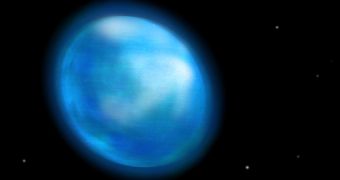Altair is the brightest star in the constellation Aquila and the twelfth brightest star in the nighttime sky, an "A" type or white star located 17 light years away from Earth (about 99 trillion miles), one of the closest stars visible to the naked eye.
Astronomers have previously photographed some of the red-giants of the galaxy, massive stars near the end of their life, but this is the first time they were able to take pictures of the surface of a smaller star, much like our own Sun, that is still in the middle of its hydrogen fusion process.
Altair is famous for its extremely rapid rotation, which makes its equator perform a complete rotation in about 6? hours, when our Sun requires just over 25 days for a complete rotation. As a result of its rapid rotation, Altair is oblate: its equatorial diameter is at least 14 percent greater than its polar diameter.
"The galaxy is shaped by the effects of relatively rare but powerful hot, rapidly rotating stars," says John Monnier of the University of Michigan, the lead author on the study that will appear on Science Express on May 31, 2007. "These stars have more in common with Altair than our own sun and understanding Altair will allow us to better understand how these influential stars scattered throughout the galaxy operate."
The images were taken using the Center for High Angular Resolution Astronomy (CHARA) telescope, at Georgia State University in Atlanta with partial support from the National Science Foundation (NSF) and they are a real breakthrough made possible by the newest advances in fiber optic telecommunication technology, that resulted in a clear image, cleaned up of some of the distortions from Earth's atmosphere.
Although astronomers know a great deal about stars and their internal mechanisms, no one was able to capture images of what the stars looked like.
"The critical component of the CHARA system is the beam combiner which allows the light from the individual small telescopes to be mixed together, which up to now had only been successfully used with radio telescopes such as the Very Large Array near Socorro, N.M," said Julian Christou, one of the NSF officers overseeing the research.

 14 DAY TRIAL //
14 DAY TRIAL //